SubProcess
To trigger a subprocess, select Activity > Type : 'Subprocess' > then go to tab 'Start a subprocess'.
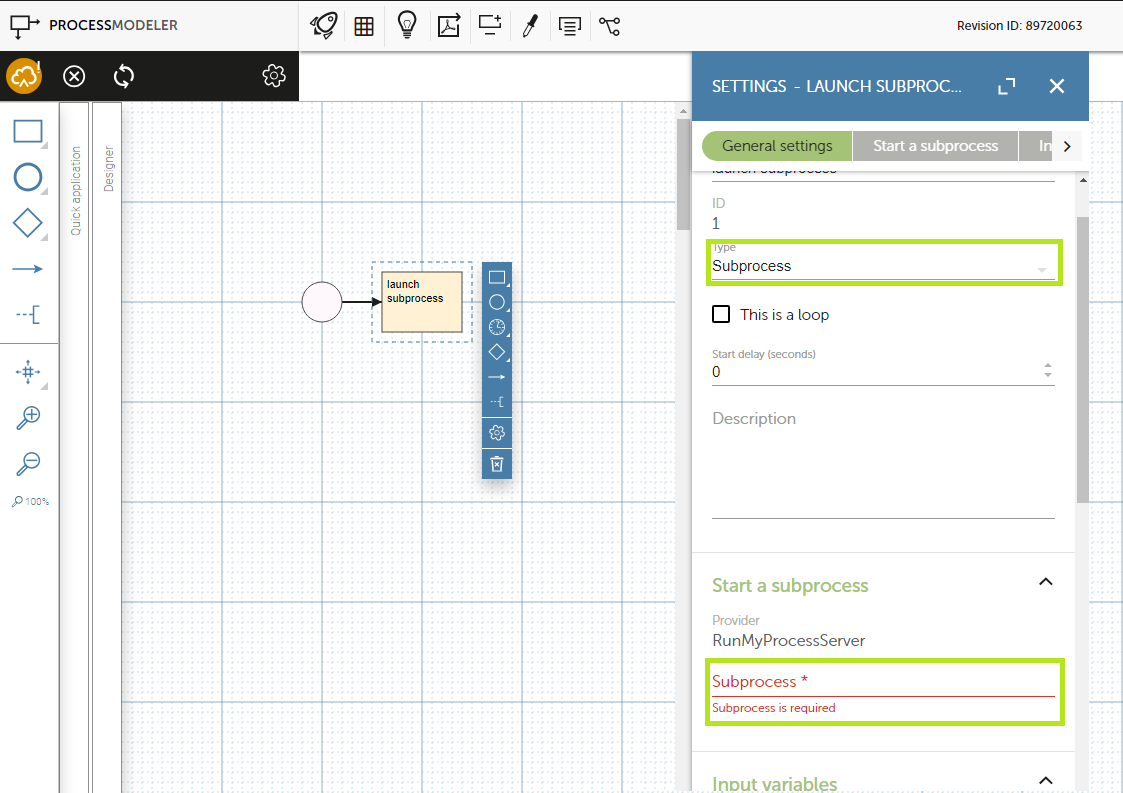
Then click on 'Search for sub-processes in the directory' link, it will open the list of processes in the project and subprojects. Select the subprocess to be triggered and click 'Confirm'.

Then you should see this screen:
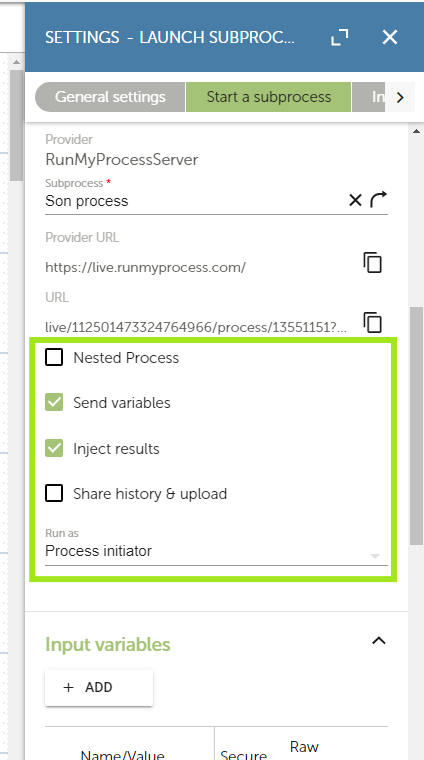
Different properties are available:
- 1 - Nested process : best practice is to not tick this option. This will only be used in very specific cases (father and subprocess share mesures for example). If ticked, you'll see father process' computed parameters are mixed with son process' ones.
- 2 - Send variables : if ticked, all the computed parameters defined in the father process will be passed as input of the son process
- 3 - Inject results : if ticked, when the son process is completed, all the computed parameters defined in the son process are passed to the father process
- 4 - Run as : you can choose who will be the P_initiator of the son process : is it the P_initiator of the father process ('Process initiator') or P_user ('Last process modifier')
- Keep in mind that the P_initiator of the son process must belongs to its start lane (cf below), otherwise you'll get an error message.
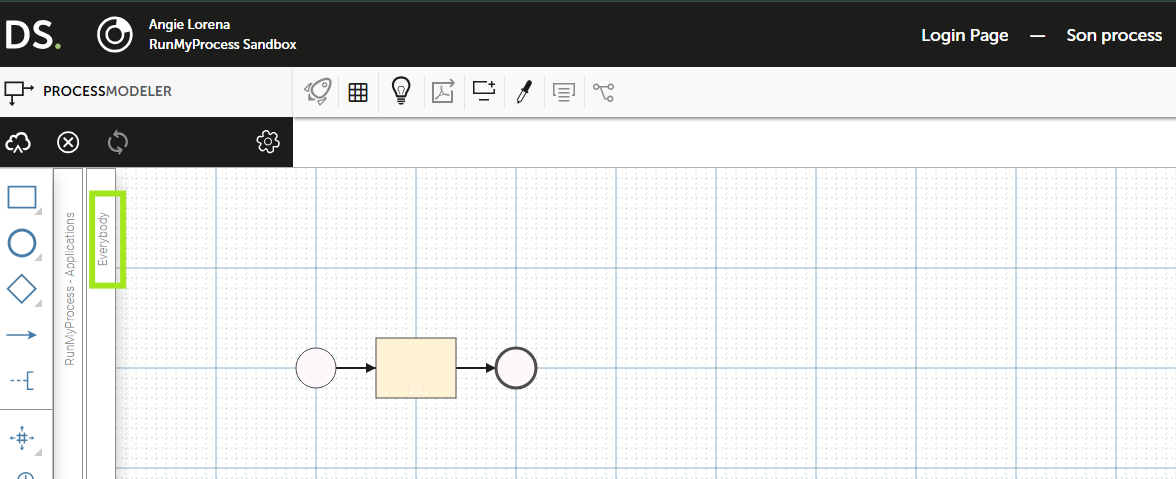
Best practice is to only pass the needed variables from the father to the son process, and to only retrieve the needed variables from the son to the father. So if you follow this practice, 'Send variables' and 'Inject results' are not ticked.
Choose the variables to pass from the father to the son process
You can specify a set of mandatory parameters to be passed as input of the son process.
It implies:
- you can't trigger the process if they are not defined as input parameters
- if a father process triggers the son process, even if 'Send variables' is unticked, these parameters will be passed
Let's configure these 'required input parameters':
Open the son process, and click on 'Settings' > 'Input variables'
Click on 'Add variable', enter a variable name, and its type.

Note about the type:
- Value : if the variable is a string, a number, a boolean
- Object : if the variable is a array, a json structure
If you choose the wrong type, eg: you specify 'Value" for a json variable, it will lead to an error when triggering the process.
Then click 'Save', and save your process.
Now try to plug again the son process to the father process:
Click on the activity in the father process, go to input variables tab.

You now see all the 'required parameters' you configured in the son process : array_phone_number, firstname, lastname, plus 2 global variables you can leave as it is(P_mode & P_version).
Now you can untick 'Send variables' in the 'Implementation of a sub-process' tab, as these parameters will be automatically passed
Note : this best practice is to optimize your process design, but here are other benefits:
- As you listed required parameters for the son process , you can't forget to first define them in the father process before passing them to the son process
- As you only pass a predefined list of parameters, when you're doing supervision of sub-process instances, you're not flooded with many other parameters you don't wantto
see - When you click on launch test (1) , you'll be able to see this parameters in the testing console. So to do unit tests of the son process, you'll definitely save time.

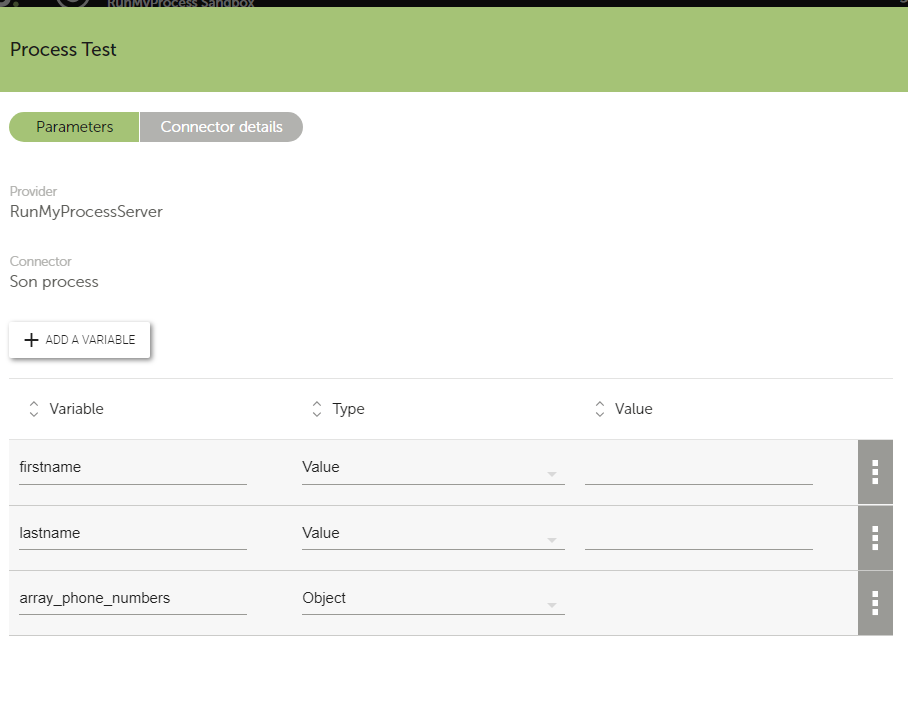
Choose the variables to pass from the son to the father process
On the father process, untick 'Inject results'
If unticked, when the son process is completed, no parameters of the son process will be passed to the father process.
But you can inject them manually, one by one.
Open the activity in the father proces, go to 'Output variables' section, add rows by clicking on 'Add' and enter name and value of the parameters to create.
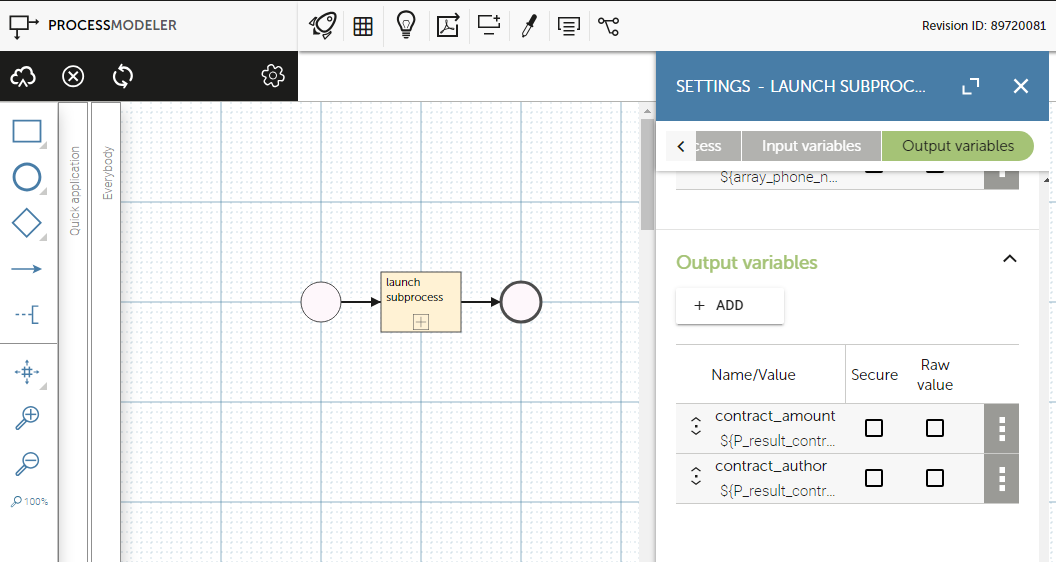
Name : the name of the variable to create
Value : its value. Syntax is ${P_result.name_of_the_variable_defined_in_the_son_process}
Save the father process, you're done.